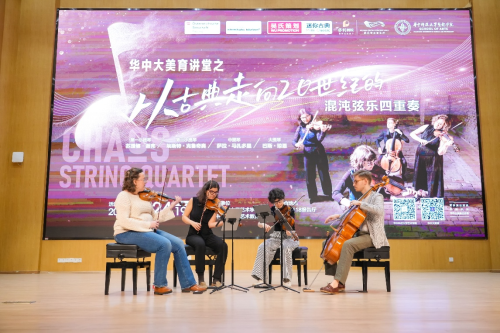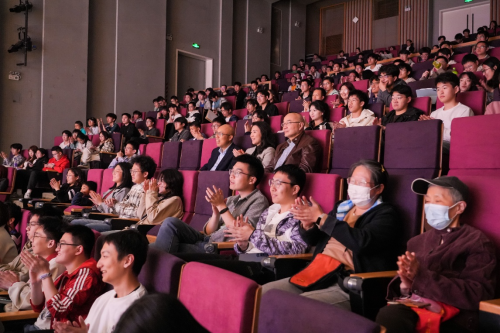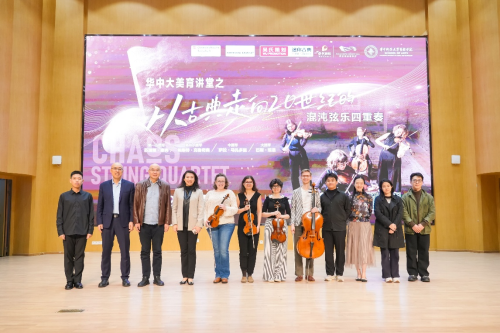On March 24, the Chaos String Quartet performed From Classical to 20th Century, a concert for HUST’s Aesthetic Education program, in Room C118 of the Wuhan National Laboratory for Optoelectronics.

Through an innovative blend of teaching and performance, the Chaos String Quartet brought art to life on campus. During the educational segment, two students took turns performing onstage. The quartet then provided expert analysis, drawing on their rich experience to examine both the technical and expressive aspects of the pieces, deepening the audience’s understanding of the compositions.
During the performance, the quartet presented the first two movements - March and Waltz - from Edward Benjamin Britten’s Three Divertimenti for String Quartet. The March’s stirring melodies evoked determination and strength, while the Waltz’s graceful rhythms enchanted the audience. Listeners were utterly captivated, immersed in the music’s beauty.
During the discussion session, the quartet shared their artistic perspectives and insights with students. They said that in this new era of education, integrating art with sciences has become an important innovative direction. This interdisciplinary approach paves the way for mutual enhancement among students and encourages holistic development of comprehensive competencies.
The Chaos String Quartet was founded in 2019. Performing at HUST, as the quartet expressed, was a unique and exceptional experience. They also shared their hope of arousing interest in music among both teachers and students through aesthetic education, aiming to enrich their lives and academic pursuits.

Deng Wen, a student from the School of Arts, praised the performance's innovative format and expressed hope for more similar events in the future. Du Qiao, another student from the same school, noted that this quartet surpassed traditional concerts in form, enhanced audience interaction, and revealed music’s appeal from fresh perspectives. Lin Zibo, a student from the School of Electrical and Electronic Engineering, described the close artist interaction as enlightening, gaining insights into how string musicians use body language to enhance emotional expression, maintain performance continuity, and internalize melodies as emotions. Wang Jianing, a student from the School of Electronic Information and Communications said that the performers’ chaotic beauty - combined with their novel style - created an unforgettable experience, and he hoped for more such arts education activities.

In the future, the Art Education Center will continue promoting the integration of art into campus life, creating more chances for students to experience and learn about art, sowing seeds of artistic appreciation, and making aesthetic education contributions to cultivate well-rounded next-generation talents.
Written by: She Chen
Edited by: Zhan Xinrui, Chang Wen, Peng Yumeng
